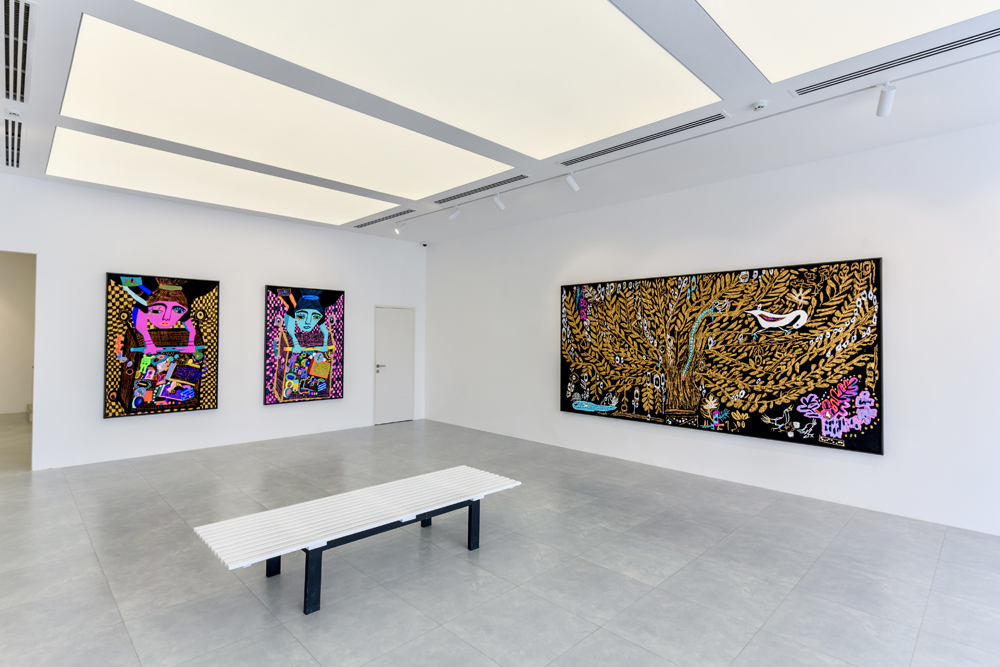Golden Thread, 2023
Zidoun Bossuyt, Dubai




Link to Exhibition
Summer Wheat is known for her vibrant paintings, multifaceted sculptures, and immersive installations that weave together the history of materiality, figuration, and abstraction in both fine art and craft milieus. Wheat’s densely populated “scapes” envision worlds where time seems to have collapsed and every person, regardless of social status, occupies a shared, equal space, in which both labor and leisure are paths to healing humanity. Using a tongue-in-cheek type of humor inspired by comic strips, Wheat subverts conventional hierarchical structures and stereotypes to create more expansive depictions of daily life throughout history. For Wheat, labor functions as both a conceptual and formal connective thread that runs throughout her oeuvre. This relates to her labor-intensive process of making a painting, the term’s definition, as well as its historic visual representation. Wheat’s work often employs the visualization of labor as a tool to expose gender and class inequality.
A signature aspect of Wheat’s work is her expressive use of color and unique method of building a painting, which integrates various tools, from her fingers, to syringes, to plastic scrapers, to cake decorating paraphernalia. Using vibrant, almost fluorescent colors of acrylic paint, she combines multiple physical techniques— pushing paint through wire mesh, painting directly onto a heavily impastoed surface, or applying select embellishments—that require her to move around her canvas, working both vertically and horizontally, on the front and the back of each piece. Wheat’s methods and engagement with the emotive nature of color embrace intuition and felt experience over conventional reason and logic, destabilizing the boundaries between figure and ground, representation and abstraction, portrait and landscape, and fine art and craft. The result is tactile, vivid work that engages process, form, and narrative equally, creating layered, non-linear compositions that offer alternative versions of history, mythology, and folklore. Wheat’s contained worlds of female figures enact a universe beyond themselves and signal the artist’s broader themes and processes.
In her practice, Wheat is influenced by both spiritual and art historical forerunners, citing de Vinci, Rembrandt (Dutch, 1606–1669), Edgar Degas (French, 1834–1917), and Andy Warhol (American, 1928–1987), and concepts connected to internal, external, and cosmic space, mirroring, and nature.
“ Planetary motifs have become a recurring theme throughout my past works. These images are meant to be used as mirrors that reflect interior states of being. In these paintings, I consider the relationship between the cosmic realm and human existence by bringing celestial bodies—the sun, moon, and stars—and earthly creatures into a shared pictorial field. Fragmentary and contorted, adorned and decorated, my figural forms and characters evoke the psychological toll and messiness of the mundane experience and search for meaning, and also the beauty and resilience implicit in this process.”